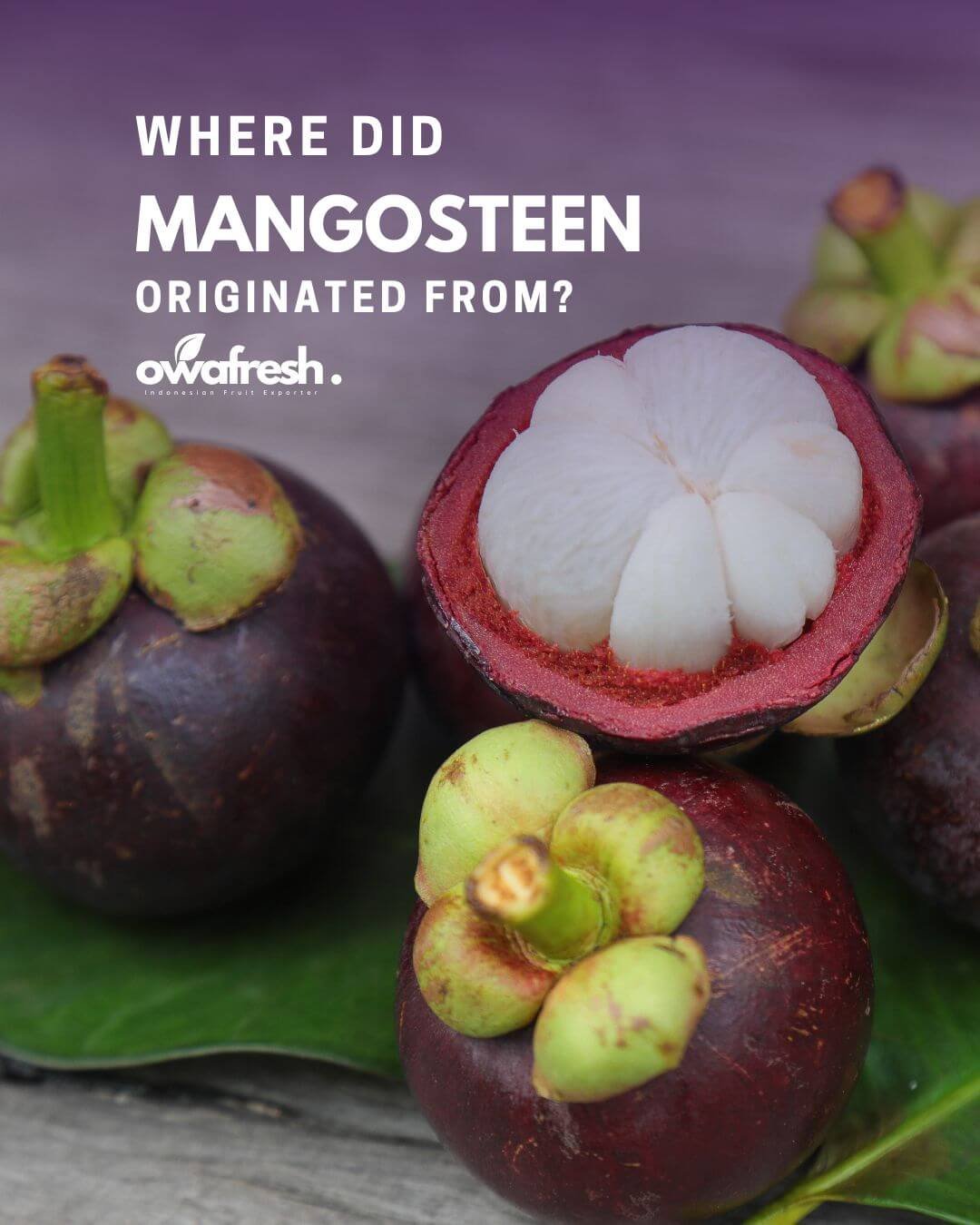 Mangosteen has fascinated fruit lovers worldwide with its juicy white flesh and sweet tropical taste. Today, it appears in premium fruit baskets and tropical markets in many countries.
Mangosteen has fascinated fruit lovers worldwide with its juicy white flesh and sweet tropical taste. Today, it appears in premium fruit baskets and tropical markets in many countries.
Yet, many people still do not know exactly where the mangosteen originated from. This article explores its unique history and explains why global demand for mangosteen keeps growing every year.
Where Mangosteen Originated From
If you’ve ever wondered where mangosteen originated from, the answer takes us deep into the lush rainforests of Southeast Asia.
a. Historical Background of Mangosteen
Historical records show that mangosteen has been cultivated for centuries in the Malay Archipelago. Farmers in this region have passed down growing techniques for generations.
They treated mangosteen as both a delicacy and a valuable trade fruit. Local communities believed its cooling effect helped balance the body during hot tropical weather.
b. Native Growing Regions
Mangosteen thrives naturally in humid, lowland forests where rainfall is abundant and temperatures stay warm all year. Countries such as Indonesia, Malaysia, Thailand, and the Philippines are widely recognized as the true native homes of mangosteen.
These areas offer the fertile soil and stable climate the trees need to flourish, which explains why Southeast Asia remains the core region for mangosteen cultivation to this day.
Spread of Mangosteen Beyond Its Native Region
While its roots are deep in Southeast Asia, mangosteen’s appeal has inspired growers and traders to introduce it to other parts of the world over the centuries.
a. Early Trade and Cultivation
In the early days of regional trade, mangosteen made its way to other Asian countries, carried by merchants who recognized its value. As shipping routes expanded, attempts were made to grow mangosteen in places like India and Sri Lanka.
Over time, small test plantations appeared in tropical zones of Africa, the Caribbean, and Central America. However, these efforts were often limited by the plant’s demanding growth requirements.
b. Limited Cultivation in Other Countries
Many farmers have tried, but mangosteen is still very difficult to grow outside its native habitat. The trees grow slowly and can take 7 to 10 years to produce fruit.
They need steady warmth, high humidity, and rich, well-drained soil. These conditions are hard to copy in non-tropical regions, so large commercial orchards rarely succeed outside Southeast Asia.
Why Mangosteen Became Globally Popular
So, how did this once-local fruit achieve such fame on the global stage? Its story is as much about taste and nutrition as it is about clever trade and marketing.
Unique Flavor and Health Benefits
Mangosteen’s popularity is largely based on its distinctive flavor. Often described as a perfect balance of sweet and slightly tangy, its juicy flesh is refreshing and satisfying. Beyond taste, mangosteen is celebrated for its natural antioxidants, vitamins, and minerals, which have added to its reputation as a superfruit in wellness circles around the world.
Growing International Demand
As global trade links expanded, so did the awareness of exotic fruits like mangosteen. Countries such as China, the UAE, and Saudi Arabia have become important destinations for fresh mangosteen exports. Today, discerning consumers view it as a premium tropical delicacy worth paying extra for, driving steady demand every season.
Indonesia’s Role in Mangosteen Export
Knowing where mangosteen originated from helps us understand why Indonesia remains so crucial to the fruit’s global supply chain.
Major Production Areas
Indonesia’s tropical islands offer some of the best natural conditions for growing high-quality mangosteen. Regions like West Java, Central Java, and East Java (including Kediri) are well known for producing export-grade fruit in large volumes. Local farmers combine traditional methods with modern practices to deliver consistent supply year after year.
Mangosteen Indonesia as a Trusted Source
Today, Mangosteen Indonesia is trusted by buyers worldwide who demand fruit that meets strict import standards. From carefully sorted grades to export certifications like Phytosanitary and COO documents, Indonesian growers and exporters ensure each shipment meets expectations.
Working with a reliable mangosteen supplier is essential for any importer. A trusted supplier makes all the difference when handling a delicate fruit like mangosteen.
How to Source Quality Mangosteen
Partnering with an experienced mangosteen supplier means you can count on stable harvests, professional packing, and smooth customs handling. This is essential for businesses shipping to competitive markets where freshness and quality are non-negotiable.
Indonesian exporters like PT Owa Ekspor Indonesia are committed to delivering the best mangosteen from the orchard to the destination port.
Conclusion
The story of mangosteen begins deep in the rainforests of Southeast Asia but reaches tables and fruit markets worldwide.
Understanding where mangosteen originated from and why it remains tied to Indonesia’s rich tropical landscape gives importers and fruit lovers a deeper appreciation for this “Queen of Tropical Fruits.”
For consistent supply and trusted quality, working with the right mangosteen supplier is the smartest way to share this remarkable fruit with customers everywhere.
Read also: Where Does Mangosteen Grow and Why Indonesia Leads and Mangosteen Price Per Kilo – What Importers Should Know


